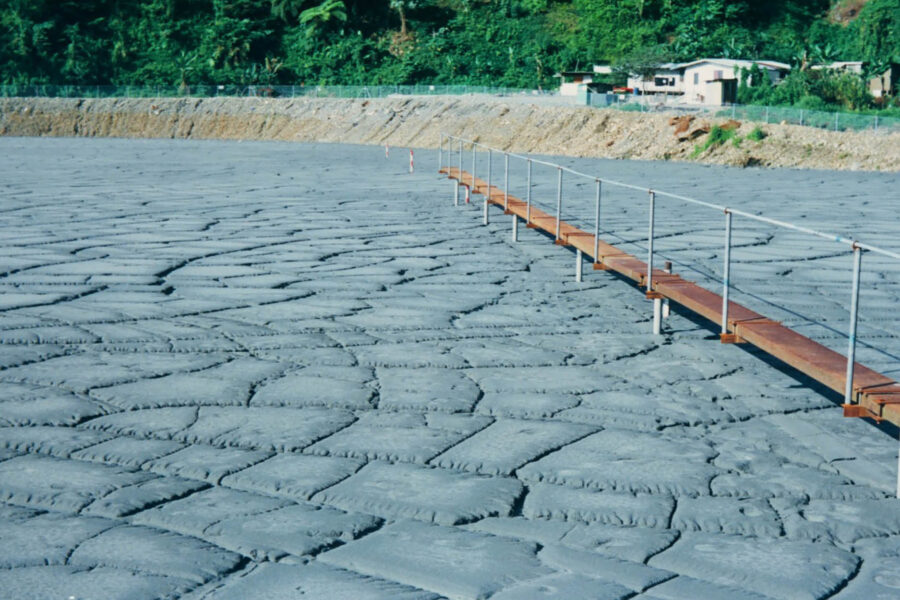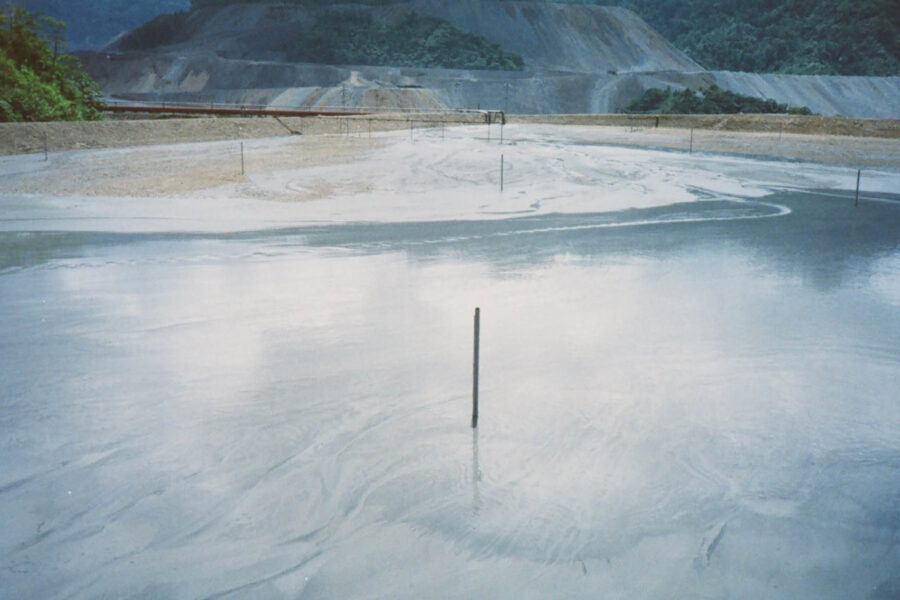Continuing from the Part One History of ATC Williams, we asked Paul Williams to tell us about his contributions to the development of the Central Thickened Discharge (commonly referred to as CTD) method of tailings storage, through the research work undertaken by ATC Williams in the area of beach slope theory and prediction.
Please enjoy this powerful story of perseverance that spans 34 years, from 1981–2015.
ATC Williams has played a fundamental role in the technical development of CTD. How did that happen?
Well, I think this is interesting to perhaps a handful of people, but it is a story dear to my heart. After founding MPA Williams in 1981, I began writing papers on CTD for conferences and seminars which were peer-reviewed. It wasn’t easy to get the industry to take up something new like CTD, but I was a strong advocate and managed to get a few jobs.
However, a problem that quickly became apparent from a CTD design standpoint was how to calculate and determine the slope of the beach that would form as the tailings are deposited, which is a key parameter. For a given stack footprint, the capacity of the stack in terms of tonnes of tailings it can store is directly proportional to the beach slope. If you predict 4% but only get 1%, then the stack will store only one-quarter of the tailings that you were supposed to design for, a major problem. I tried to find a formula for predicting the slope but without success. I looked at research papers and textbooks but soon discovered that such a formula didn’t exist. That was extraordinary to me.
For want of anything better, we had to rely on projects where pilot plants were testing for the required metallurgical processes for a particular ore and producing small amounts of tailings as a result. We created small stacks of tailings and measured the slopes. What we didn’t know then but found out soon enough was that such tests are of no value whatsoever. The slope of a full-scale stack depends on the flow rate, which would, of course, be many times greater than the throughput rate at a pilot plant.
Testing times and a revelation
ATC Williams (then MPA Williams) had been going for about five years when David Nixon at CRA’s in-house engineering group, Minenco, approached us to design a thickened tailings scheme for their Bougainville copper mine. The mine throughput was hundreds of thousands of tonnes per day. Since start-up, they had been discharging tailings to a river adjacent to the mine, but this was no longer environmentally acceptable. I persuaded David, at the time the Head of Projects at Bougainville, to give us a testing area about the size of the Melbourne Cricket Ground on a waste rock dump. We sealed the floor and set up a trial, limiting the rate of rise by discharging tailings to the area for, say, two hours a day at a specific rate and then leaving it for twenty-four hours to see what happened.


One day, I decided to watch for the entire two hours, standing in the rain because it always rained at Bougainville in the afternoons! I took photos every five to ten minutes, and I was stunned by what I saw. As I watched, the tailings, instead of just spreading out in all directions, started forming channels that conveyed the slurry down the beach to be deposited in quite a small area at the end of the channel. There was clearly 100% transport in the channel, with no deposition of tailings solids. I concluded that the channel must be steep enough to create enough turbulence to keep the slurry in suspension until it “ran out of puff” as it were and dropped its load. This was a revelation, because it meant that we simply needed to determine the hydraulics of settling and turbulence and the kinetic energy required to transport the solids fraction. This energy could only come from the loss of potential energy, in this case, the beach slope. Eureka!
I’m not a hydraulics guy, so I quickly wrote a proposal describing a PhD research project and tried to sell it to tertiary institutions that specialised in hydraulics or slurry transport. Ten years passed, and I could not find anyone to take me seriously. I gave up and thought I would go to my grave without knowing the answer to this problem despite it being, in my eyes, so nearly in reach.
A long-awaited breakthrough
In 2000 we were invited to Iran by Rio Tinto, who were pursuing copper exploration opportunities, and were put in touch with the National Iranian Copper Industries Company (NICICO). A deal was reached that they could explore if they helped NICICO solve their tailings management problems. Via David Nixon again, we became part of the team that Rio Tinto put forward. Steve Murphy and I were on our third Iranian tailings job when I met Behnam Pirouz. He was on the NICICO team for the new Sungun mine.
Behnam was responsible for the tailings dam but was also looking for a PhD research project in, of all things, hydraulics. Very excitedly, I proposed that he come to Australia to do the tailings beach slope research that I had given up on several years before. We talked to Ben’s boss, and he agreed to fund half of Ben’s salary to work on the project. ATC would fund the other half, as well as support and organise site access to one of CRA’s mines, who were also interested in the research.
Behnam was completely self-motivated and organised. It was astonishing and wonderful to watch. CRA contributed in-kind, and we finally got a CRC research grant as well. Ben was able to use facilities at RMIT (Royal Melbourne Institute of Technology), and have access to their professors, also paid for by ATC.
By the end, he had an answer. Lo and behold, we had a method for calculating beach slope simply from small-scale laboratory tests of the tailings slurry properties. I was ecstatic! So was Ben, and he got his PhD.
Now we had something to sell. We didn’t have to guess about beach slopes anymore, and we had laboratory tests and full-scale results to prove it. Eventually, Behnam settled in Australia with his wife, and is currently a Principal of ATC Williams and managing The Slurry Transport Group.
A second PhD was subsequently completed by Tim Fitton, again supported by RMIT and funded by ATC Williams. Since the completion of the initial research programs in the late 2000s, beach slope theory has been further developed within ATC Williams to cover other important aspects such as beach profile concavity and the effect of tailings thickener performance. These particular in-house developments were driven by Keith Seddon, Senior Principal and Technical Manager of the company at the time.
In 2013, Sadegh Javadi Rudd conducted a third PhD and he joined Behnam as a Senior Associate Engineer to continue this specialist work.
Recognition arrives at last
Once Ben’s PhD work was completed, we began in earnest to publish papers and articles on beach slope theory and the application of CTD. In 2011, we went to Perth as one of the presenters on beach slope prediction at a one-day pre-conference workshop for the annual International Conference on Paste and Thickened Tailings. That’s when we started to gain real credibility and status in the field and when thickened tailings became accepted as a valid method for tailings storage.
About ten years ago I calculated, that from the thirty-five or so thickened discharge schemes that existed around the world at that time, more than half were in Australia, and more than half of those had been designed by ATC. We became the people you went to for that type of dam.
All in all, ATC Williams has probably spent of the order of three-quarters of a million dollars to fund research students, which is most unusual for an engineering company of our size. For me, it was a matter of pride that we found a practical solution to the beach slope prediction problem and have been able to contribute significantly to the development of the science and engineering theory.
How lucky can you be to have that sort of opportunity in your professional life?